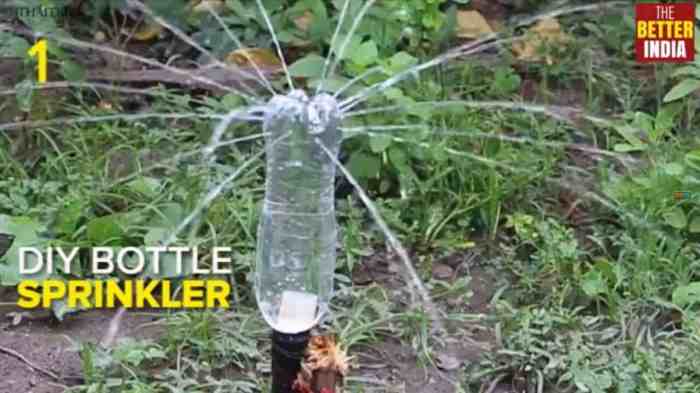DIY yard irrigation is a fantastic way to keep your lawn and garden lush and healthy while saving money and water. By installing your own irrigation system, you gain control over your watering schedule, allowing you to tailor it to the specific needs of your plants. This means less wasted water and a more efficient use of resources.
The benefits of DIY yard irrigation extend beyond just saving money and water. You can also personalize your system to meet the unique requirements of your yard. Whether you have a small, compact garden or a sprawling lawn, there are DIY irrigation solutions to fit any space. With a little planning and effort, you can create a system that delivers water precisely where it’s needed, ensuring healthy growth for your plants.
Choosing the Right Components: Diy Yard Irrigation

Once you have a plan for your irrigation system, it’s time to choose the right components. This includes sprinklers, valves, and a controller. The best components for your system will depend on factors such as your yard size, plant needs, and budget.
Sprinklers, Diy yard irrigation
Sprinklers are the most visible part of your irrigation system, and they come in a wide variety of types. The type of sprinkler you choose will affect the water distribution and the amount of water used.
- Rotary Sprinklers: These sprinklers rotate to cover a large area with a gentle, even spray. They are a good choice for lawns and gardens that need a consistent amount of water. Rotary sprinklers can be adjusted to change the spray pattern and coverage area.
- Impact Sprinklers: These sprinklers use a spinning head to create a forceful spray that can cover a wide area. They are a good choice for lawns that need a lot of water or for areas with heavy vegetation. Impact sprinklers can be more prone to clogging than other types of sprinklers.
- Spray Sprinklers: These sprinklers use a nozzle to create a fine mist that is ideal for watering delicate plants. They are also a good choice for areas where you don’t want to disturb the soil, such as around trees or shrubs.
- Drip Emitters: Drip emitters deliver water directly to the roots of plants, reducing water waste and minimizing evaporation. They are a good choice for gardens, flower beds, and vegetable patches. Drip emitters can be installed on a drip line or on individual plants.
Valves
Valves are essential for controlling the flow of water to different areas of your yard. They are typically installed in a valve box, which is a small, weatherproof enclosure that protects the valves from the elements.
- Manual Valves: These valves are operated by hand and are typically used for simple irrigation systems. They are a good choice for small yards or for areas where you only need to water occasionally.
- Automatic Valves: These valves are controlled by a timer or a controller and are used for more complex irrigation systems. They can be programmed to turn on and off at specific times, making it easier to manage your watering schedule.
Controllers
Controllers are the brains of your irrigation system. They determine when and for how long your sprinklers turn on. Controllers can be programmed to adjust watering times based on factors such as weather conditions and soil type.
- Basic Controllers: These controllers are simple to use and offer basic programming features. They are a good choice for small yards or for those who don’t need a lot of customization.
- Smart Controllers: These controllers connect to the internet and can be controlled from your smartphone or tablet. They can also use weather data to automatically adjust watering schedules, saving water and money.
Creating a DIY yard irrigation system is a rewarding project that can save you money, conserve water, and enhance the beauty of your outdoor space. By following the steps Artikeld in this guide, you can confidently design, install, and maintain a system that meets your needs and helps your plants thrive. Remember to consider your specific yard conditions, plant types, and budget to create a personalized irrigation solution that works for you.
Setting up a DIY yard irrigation system can be a rewarding project, allowing you to conserve water and keep your lawn lush. While planning the layout, you might also want to consider building a DIY round table to enjoy your outdoor space. Check out this guide on how to make a DIY round table , which can complement your backyard oasis.
Once you’ve finished both projects, you’ll have a beautiful and functional outdoor area that you can enjoy for years to come.

